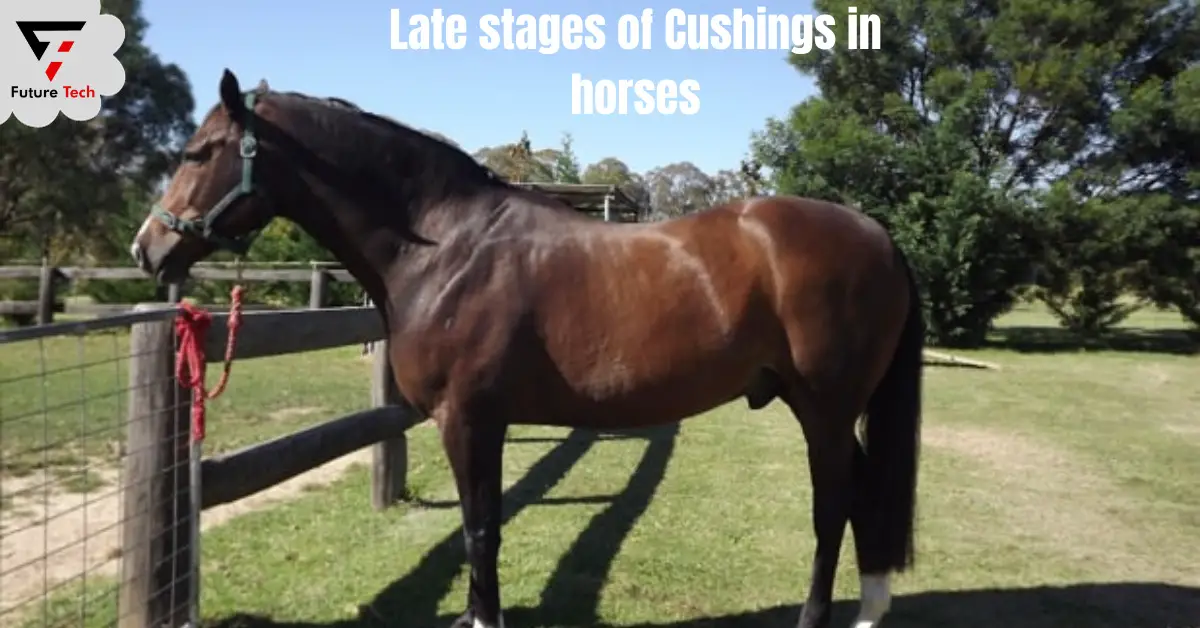What is a horse’s stifle?
Horses have a joint in their hind legs called a stifle, similar to a human knee. The horse stifle joint’s function allows the back legs to flex and extend, just like our knees do. Due to their concealment within the structure of the horse’s back legs, stifle joints—the largest in its body—do not initially appear to be joints. When the horse’s tibia and femur bones join, it forms the stifle.
The stifle joint is incredibly intricate. A complex network of muscles, two collateral ligaments, and soft tissues encircles the stifle of a horse. There is also complexity inside the horse stifle joint, with two joint cavities held in place by two cruciate ligaments. In addition, lubricating the joint are the joint capsule and the three patellar ligaments. Fourteen ligaments support the joint in total.
What is the function of a horse’s stifle?
Whether running across a field or jumping over a fence, a horse can move forward using their stifle joint. The stifle joint is essential to your horse’s ability to move because it pulls your horse’s hind legs forward when it strides forward.
A thin capsule that lubricates the joint and offers some shock absorption surrounds the stifle joint itself. The horse stifle, also known as their “stay apparatus,” serves as both a means of movement and a source of support for the animal when they stand. The stifle of a horse is angled, whereas the knee and leg of a human stand motionless in a very different position. A horse’s stifle will lock into position, enabling it to rest while upright.
Given its complex construction, it is not surprising that stifle joint injuries and lameness can occur frequently, especially in active horses.
ANATOMY OF THE STIFLE JOINT
The largest joint in a horse’s body, the stifle joint, allows for the bending and extension of the rear leg. The intricate arrangement of muscles and ligaments gives the joint stability and range of motion. The femur, tibia, patella, menisci, and ligaments—including the medial patellar ligament, collateral ligaments, and the three patellar ligaments—compose the stifle joint. The menisci and ligaments give stability and lessen friction during movement, while the femur, tibia, and patella create the articulation of the stifle.
The stifle joint is crucial for sustaining the horse’s weight and absorbing shock. The ligaments help to hold the joint in place while the menisci equally distribute weight throughout the joint. While the stay apparatus uses the stifle joint to give support when the horse is standing, the anterior cruciate ligaments and posterior cruciate ligaments (ACL and PCL) are in charge of ensuring joint stability.
The stifle joint facilitates smooth joint flexion in addition to bearing the horse’s weight. This has led to increased attention on equine stifles since new advancements in imaging technology have made it possible to diagnose and treat stifle-related problems more accurately.
STIFLE VS. HUMAN KNEE
The human knee joint and the stifle joint in horses are similar. The functions of these joints are identical and allow the leg to move. Because of its differing angulation from the human stifle, the horse stifle is less prone to cruciate ligament ruptures, a common injury to both human and canine knees. This is because, in contrast to people, horses have a different weight distribution and an angled stifle joint. Animals with severe ruptures of the cruciate ligament have few choices. The animal may benefit from joint blocks, corrected shoeing, and other therapies, but the prognosis might not improve.
Horses have longer patella ligaments than humans do, which is essential for the stability of the stifle in addition to the stifle joint’s angle. They suffer from injuries and lameness less frequently as a result of the patella ligaments extending. Horses seldom get meniscal injuries or tears in the cartilage, which is common in human knee injuries. The medial femorotibial joints and patellar ligaments in the horse’s stifle have a particular configuration and structure.
TYPES OF STIFLE DISORDERS
Numerous disorders can affect the stifle joint, which is the joint in the rear leg of horses between the femur and tibia bones. They include meniscal tears, arthritis, bone cysts, and ligament injuries. Repetitive stress, trauma, overuse, abrupt direction changes, and quick motions can all lead to these conditions.
Often found in young horses, upward fixation of the patella is a common stifle disease that goes by the names “sticky stifles” and “catchy stifles.” The stifle joint locking and maintaining the leg in a fixed posture are the characteristics of this condition. Regular exercise is essential to strengthen the muscles and ligaments and prevent upward fixation of the patella. In addition to keeping the stifle joint robust and healthy, this can help lower the likelihood that the ailment will manifest.
Furthermore, it’s critical to maintain a balanced food and supplement regimen for your horse to make sure that their joints are getting the nutrition they require to stay strong and healthy.
SIGNS AND SYMPTOMS OF STIFLE INJURY
Your horse may exhibit lameness in the rear end and one or more of the following symptoms if they are showing signs of a stifle injury:
. Inflammation and edema surrounding the stifle area
. Dragging their toes around
. Not able to trot
. Unable to retreat or move backward
. A shorter stride distance
. Problems climbing or descending hills
Stifle development problems are usually the result of a congenital abnormality and can cause swelling and inflammation of the stifles from a young age. Developmental problems are frequently sporadic, more pronounced during exercise, and less pronounced during periods of low activity. These developmental problems include osteochondritis dissecans, patterer laxation, and subchondral bone cysts.
CAUSES OF STIFLE INJURY
Stifle lameness can result from various causes, as the stifle is a complicated joint. Among the most typical are:
Arthritis: The stifle is susceptible to arthritis in older horses, just like any other joint. Stifle arthritis frequently develops as a result of a chronic injury.
Bone cysts beneath cartilage: Large cysts can form in the fetlock and the stifle, though the cause is not always clear. Trauma and other disorders of the bone or cartilage, such as osteochondritis dissecans, may also be relevant.
Meniscal tears: Meniscal tears are the most common causes of stifle lameness; the severity of the tear can range from mild lameness to severe condition.
Osteochondrosis: The first six months of the foal’s life are when these lesions usually appear. Lameness symptoms might show up once the animal starts working.
Stifle trauma: Any horse can trip and fall or slip in the mud, but horses in specific disciplines or with specific conformation problems are likelier to experience stifle lameness.
RISK FACTORS FOR STIFLE INJURIES
Specific disciplines have a higher incidence of stifle injuries. These consist of:
- The barrel race
- Reducing Activities
- Halter racing Advanced dressage
- Stifle lameness can occur more frequently in any activity that involves abrupt stops, abrupt direction changes, or fast movement.
A stifle injury can be more likely in disciplines like dressage, which at higher levels require bending and rotation of the upper body.
The likelihood of stifle lameness is higher in horses with straight hind limbs. Likewise, so are horses with long toes and low heels on their hooves.
DIAGNOSING STIFLE INJURY
Ensuring the most effective treatment plan and preventing further damage requires accurately diagnosing stifle injuries in horses. A visual assessment should be the first step in evaluating a possible stifle injury. Stifle injury diagnosis usually entails measuring swelling, performing flexion tests, obstructing joints, and using imaging methods like ultrasound and X-rays. When it comes to stifling injuries, an ultrasound can reveal whether there is ligament or muscle damage, and an X-ray shows whether there are any fractures, bone cysts, or arthritis.
An essential first step in correctly diagnosing stifle injury is imaging technology. Finding abnormalities in the stifle joint can help prevent future damage and enable the creation of the best possible treatment strategy.
It is imperative to remember that employing imaging technologies in conjunction with clinical sign evaluation and flexion test results is necessary to ensure an accurate diagnosis.
TREATMENT
The most crucial treatment for stifle injuries in horses is rest. Anti-inflammatory drugs may be prescribed to horses with stifle injuries to relieve swelling and provide relief. Although they come with risks, stifle injections are another option for reducing pain and inflammation.
Arthroscopy is an invasive procedure used for both therapeutic and diagnostic purposes. In contrast, desmotomy is a surgical procedure used when more conservative treatments fail and involves cutting the medial patellar ligament. Horses with stifle injuries may benefit from additional therapies, including platelet-rich plasma therapy, estrogen, laser therapy, hydrotherapy, equine acupuncture, and interleukin-1 receptor antagonist protein. It’s critical to create a treatment plan that is specific to the needs of each horse, individualized for each case.
A combination of rest, anti-inflammatory drugs, and additional therapies like physical therapy and, if required, surgery should be part of this plan. Maintaining joint flexibility and muscle strength also involves using a controlled exercise program.
SUMMARY
Like a human knee, horses’ hind legs have a stifle joint that permits their back legs to extend and flex. This complex joint is essential to supporting the horse’s weight and providing shock absorption. Compared to humans, horses’ patella ligaments are longer, which is crucial for the stability and angle of the joint. Because of the angled stifle joint and altered weight distribution, cruciate ligament ruptures are less common in this joint type. Meniscal tears, arthritis, bone cysts, and ligament injuries are examples of stifle disorders that can impact the stifle joint. A healthy diet and regular exercise are important for preserving the strength and health of the joints. Improvements in imaging technology have allowed for more precise diagnosis and treatment of stifle-related issues.
Horses suffering from stifle injuries may experience swelling, edema, trouble walking, trotting, and climbing hills. Osteochondrosis, meniscal tears, arthritis, bone cysts, and stifle trauma are among the causes. Lameness is common in horses with conformation issues or those trained for particular disciplines. X-rays, ultrasounds, and flexion tests are imaging modalities to diagnose stifle injuries. Rest, painkillers, injections, arthroscopy, desmotomy, and other therapies are all part of the treatment plan. Physical therapy, anti-inflammatory medications, rest, and a carefully monitored exercise regimen should all be part of an individualized treatment plan.




